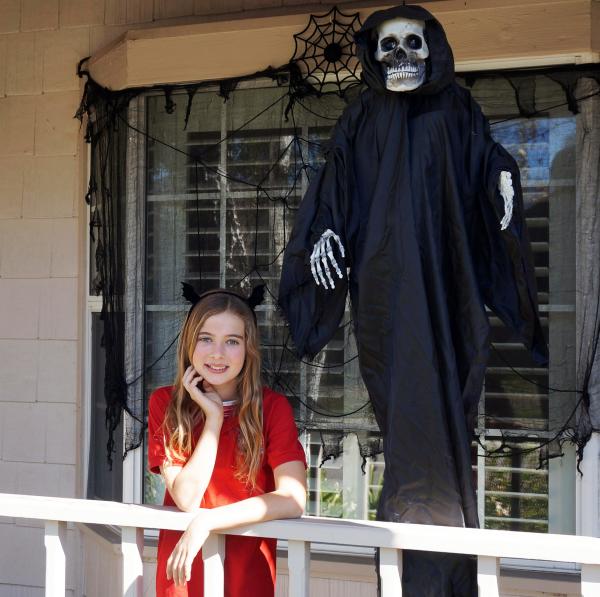KID REPORTERS’ NOTEBOOK
The History of Halloween


Kid Reporter Alula Alderson looked into the Celtic origins of Halloween.
Halloween is a favorite holiday in the United States. Many kids love dressing up as witches, goblins, and ghosts and trick-or-treating.
How did Halloween evolve into the celebration it is today? To find out, I spoke with Lesley Bannatyne, an author and expert on the subject of Halloween.
According to some legends, Halloween began in Ireland more than 2,000 years ago as a time of the year known as Samhain. On November 1, the Celtic tribes would gather together for food and games. They were marking the onset of winter, which was believed to be a time when the otherworld was present.
“Samhain was a reminder that the dark season was coming,” Bannatyne told me from her home in Massachusetts. “The old Irish sagas tell us that on this night the fairy mounds would open, and all sorts of creatures would emerge.”
Over time, the tradition spread to the U.S. At first, the holiday was considered a time to celebrate the harvest. It involved telling ghost stories, singing, and dancing. “When Halloween was first celebrated in the late 1800s, it was for fun,” Bannatyne said.
Before long, Irish immigrants arrived in the U.S and helped to popularize the holiday. Inspired by European traditions, Americans began to dress up in costumes and go around their neighborhoods, asking for money or food. This expanded into handing out treats to prevent naughty children from playing pranks. Later, the custom evolved into what we now call trick-or-treating.
FROM TURNIPS TO PUMPKINS
In the 19th century, people in Ireland and Scotland would carve faces into turnips and illuminate them with candles. The turnips would be placed along the streets to ward off evil spirits.
This arose from the legend of Stingy Jack, a mythical character in Ireland who was known for his evil deeds. Jack was said to have outsmarted even the Devil. When Jack died, the Devil took revenge by casting him into the dark night with only a coal ember in a carved-out turnip to light the way. That is how the tradition of the Jack-O-Lantern began.
When Irish immigrants settled in the U.S., they brought the tradition with them. However, since there were no turnips, they used pumpkins instead.
“In 19th-century America, kids would carve a scary face in a pumpkin, light it up with the stub of a candle, and pop out from behind a fence, wall, or tree in the dark to frighten whoever happened to walk by,” Bannatyne said.
Over the years, Halloween has incorporated many traditions—everything from bonfires to haunted houses. Although the original Celtic traditions have evolved, Halloween is still a festive holiday.
